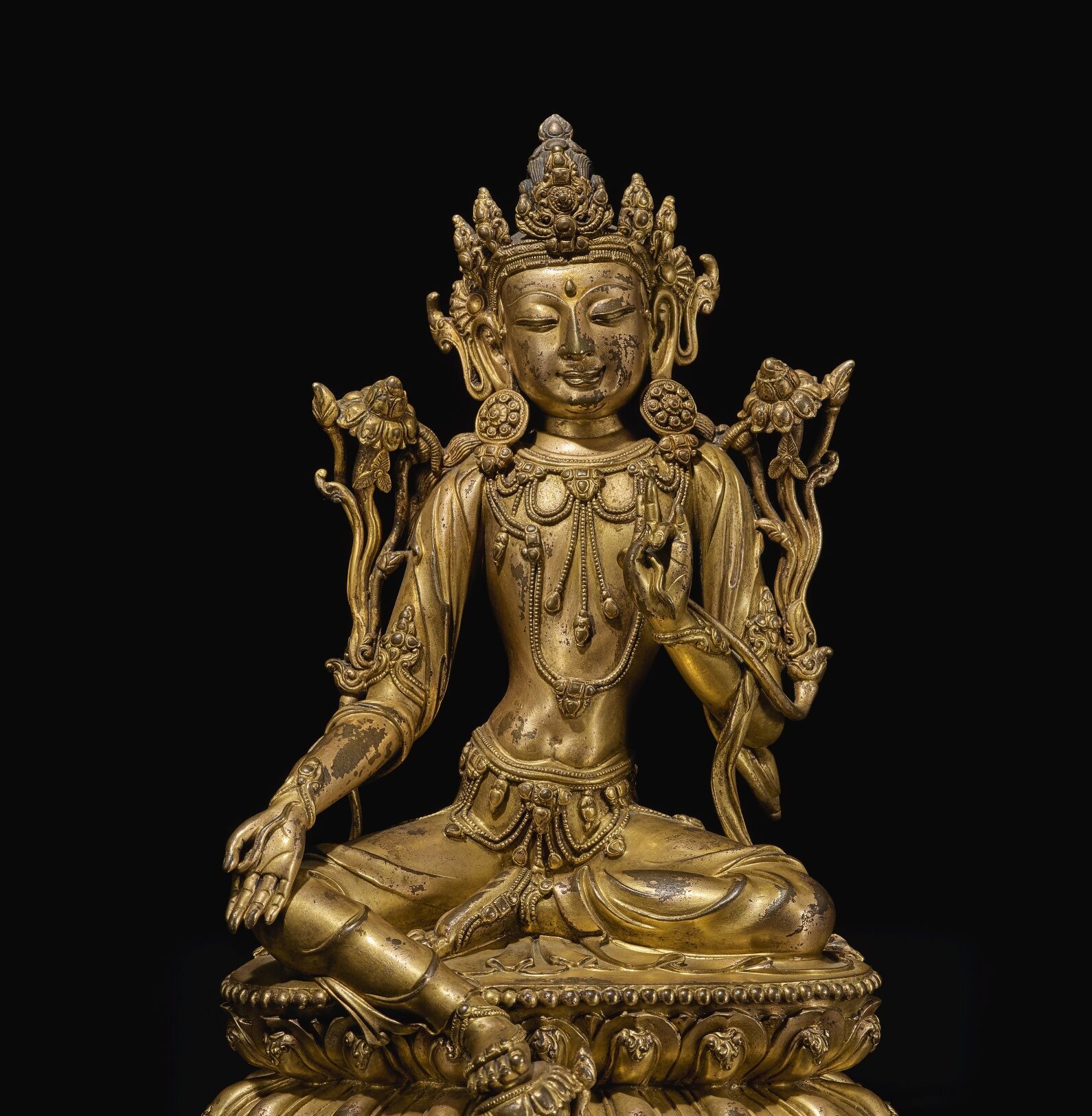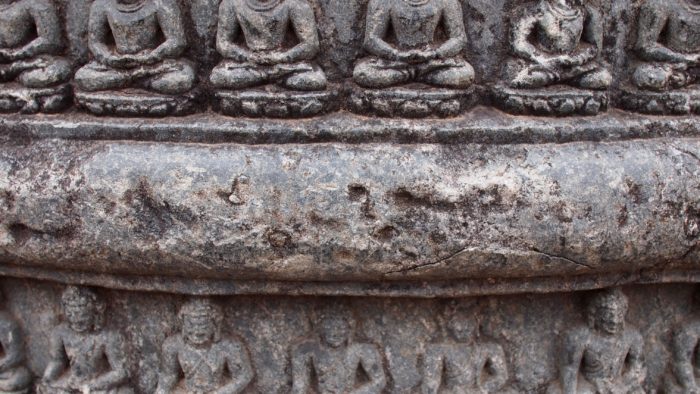Inner World, an album fusing the Dalai Lama’s teachings and mantra will be released on July 6, his 85th birthday. The idea to produce the album was sown five years back when New Zealander Junelle Kunin visited him in Dharmashala in India. The 11-track album also features sitar player and composer Anouska Shankar who plays Ama-La, a track honouring mothers.
Speaking about the album, the Dalai Lama has said that “music can help people in a way that he can't; it can transcend differences and return us to our true nature and our good heartedness.”
The town of Dharamshala, nestled in the Himalayas, is a home away from home for many Tibetans. Standing at the Thekchen Chöling Temple Complex at McLeodgang one cannot but be moved by the chants and splendour of Tibetan Buddhism, familiar yet unfamiliar.
In his essay on Indian Yoga-Tantra in Tibet, Vedic scholar S K Ramachandra Rao brilliantly outlines the influence of India on Tibetan Yoga and Tantric traditions. Tibet has viewed India as a ‘scared land’ and India has seen ‘Bhota’ (the Indian name for Tibet) as its religious frontier, he writes.
The scholar says that the connect goes as far back as 700 AD, and among the Yogis who made a deep impact on the Tibetan imagination was Padma-sambhava, revered even today as a seer.
Professor Rao says that the reason that the Tibetan Yogic practices seem different is because some aspects have totally disappeared from the Indian context. “The reason for this strange occurrence is to be sought in the total destruction of the medieval Indian universities (like Nalanda, Vikramasila and Jagaddala) in Magadha during Muslim invasion in the thirteenth century. These centres were the scenes of intensive learning, and Tantra-Yoga activities of some of the eminent Siddhas (like Santi-pa, Naropa, Atisa-Diamkara and Maitri-pa) who had reconciled the traditional Yoga of the Mahayana innovation. Vajrayana emerged as a result of this confluence, and was a continuation of Indian tradition in Tibet.”
When Indian Siddhas moved to the Himalayas to avoid persecution, Tibetans welcomed them as they were already familiar with the practices of these gurus, says Professor Rao. The Sanskrit works of some of these Siddhas was translated into Tibetan. While a cursory look would make it appear as if the Tibetan tradition is different and indigenous, Prof Rao says “the basic manuals and guide-books as well as the theoretical presuppositions and arguments are no doubt Indian”. However, he adds that remarkable additions have been made to this due to the genius of the Tibetan masters. In addition, the lama masters are in possession of ‘personal notes’ and oral precepts.’
The Tibetan outlook classifies living beings into three divisions: those with capacity to reason (Shes), those who do not have this faculty and operate on the basis of instinct, and the third that don’t have even impulses (hDu-Shesmed-Min). Prof Rao says that this division is not to be found in either Indian or Tibetan texts and is only in the oral tradition.
The religion practiced in Tibet is described as Tantric Buddhism. “But the Tibetans themselves call their religion merely CHos (religion, dharma) even as Hindus call theirs.” The faith that existed before Buddhism’s advent was known as Bon (pronounced paean),” writes Professor Rao. The name Tibet itself is believed to have originated from Bod, signifying ‘upper part of the land of snows’, comprising the provinces of U and Taang. “The Sanskrit equivalent of Bod is Bhota, the name by which Tibet was always known in India.
Surrounded by harsh climatic conditions and very difficult living conditions, the people of Tibet understandably took recourse to a religion that emphasised the occult, writes Professor Rao. The word Bon, a short form of Gyung-Drung gi-Bon, meaning to utter magical spells, has been described by Cunningham and Rockhill as deriving from the Sanskrit punya, meaning power acquired by magical incantation. Professor Rao says that punya is another name for the svastika (gYung-Drung) which was one of the titles of the ‘founder’ of Bon.
The ‘Ah’ of Aum is a significant part of Tibetan traditions. Professor Rao says one of the expressions of their wizard-sorcerers was Ah-Mes (Hail ancient) and the mountain God in Bon is called Ah-mes. S C Das, the famous Indian pioneer of Tibetan studies, observes that there in the Bon pantheon, female deities outnumbered the male. “The cult of the mother goddess was not an unnatural product in the primitively matriarchal society of early Tibet. Some of these persisted in the later Bon-CHos also, like dPal- IdanIHa (the Tibetan version of our Kali), aGrol-Ma (Tara), and the mKHaa-aGro-ma (dakinis).”
Professor Rao says the Magic-dart (PHur-Bu) was deified as Phu-pai IHa. “The Indian origin of this deity is suggested by the representation of this God with a winged body and its description as Garuda (mKhor-IDing).
The introduction of Buddhism to Tibet is credited to the wives of the Tibetan monarch Strong-bTStan-sGam-Po (AD 569-650). Professor Rao says of the many things that the monarch, whose wives were Buddhists and foreigners was to send the talented Tibetan Thom-Mi ‘Sambhota’ to Indian around AD 640 in order to bring back the art of writing. “Owing to this circumstance, ‘religious speech (CHos-sKad) was developed in Tibet as a distinct species of language, different from folk speech; Sanskrit proved the model and also the content for it. Although Tibetan, is like Chinese, a Mongoloid speech and tonal, a pictograph never gained ground there,” writes Professor Rao.
He explains that is how on the Indian border of Tibet, the language used in Tibetan books is styled ‘LHA-S-Sanskrit’. “Also Tibetan books were prepared in Indian style, after the model of palm leaves, the scroll format of the Chinese did not become popular there.”
Sambhota’s visit to Nalanda has been recorded as well as his visit to South India, mentioned by Bodhimur. Professor Rao says that the God that appealed to Sambhota’s imagination was Avalokitesvara, a bodhisattva who resided on mount Potalaka in South India and who became the central deity of the Tibetan pantheon. This worship was conveyed through Karanda-vyuha-sutra which Sambhota translated into Tibetan. “The legend that the Buddha entrusted the care of Tibet to the bodhisattva Avalokitesvara is contained in the Manjusri-paramita, and Tibet came to be associated in the minds of the people with the ‘holy land of Avalokitesvara.”

Avalokitesvara
When the monarch’s grandson Khri-Srong-IDeu-bTSan (AD 705-755) became king, he invited from India the most celebrated masters of the age – Santa-rakshita, Padma-sambhava and Kamala-sila. Santa-rakshita soon realised that the Bon folk needed a more powerful monk, someone with knowledge of occult. Professor Rao says that among the many miracles that the Padma-sambhava, the new choice from Nalanda, wrought was the miracle of establishing Buddhism in Tibet. He belonged to the Yogaachara School and specialised in ritualised initiations (abhisheka). It is believed that among his works is Samayapanchashika, preserved only in Tibetan translation.
Prof Rao writes that he incorporated all of the Bon rituals into the Buddhist cults grafted into Tibet. The religion that he grafted was not practiced in India and was largely native to Tibetan soil, but “the ultimate direction which was Indian was grafted on them,” he writes.
Soon after Santa-rakshita was called back from Nepal and both established the first Buddhist monastic center in Tibet around AD 749 in bSam-Yas (achintya-vihara) on the model of the Odantapura monastic college in India. “If Tibetans are gentle souls worshipping fierce divinities, and have accommodated the ‘thunderbolt’ (vajra) with the abiding peace of vacuity (sunyata) the credit for this achievement must go to the two enterprising Indian monks, each working in his own way to accomplish the welfare of the people.”
Santa-rakshita initiated seven Tibetans into the standard monastic order. “They were the first Buddhist monks in Tibet, committed to the ten restraints (dasa-sila) after strictly Indian fashion.” After the passing of Santa-rakshita, the king invited his foremost pupil from Nalanda, Kamala-sila to Tibet. “He along with scholars like Shiramati and Buddha-kirti were responsible for the spread of genuine Buddhist religious ideas in Tibet thus completing the process started by Santa-rakshita and Padmasambhava,” writes Professor Rao.
(Professor S K Ramachanra Rao’s book Yoga and Tantra in India and Tibet is published by the Kalpathru Research Academy)





